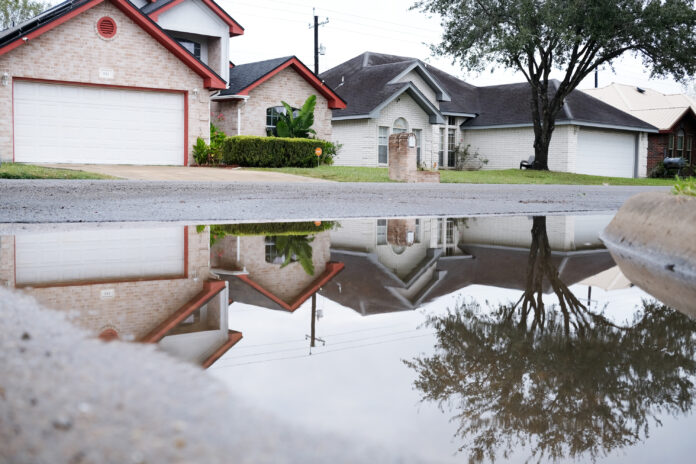
HARLINGEN — Since Hurricane Dolly’s rains pounded the area in 2008, floodwaters have rushed into Justin Alexander’s home twice.
Today, he blames the developer of the Adam’s Crossing subdivision, where he’s lived since 2007.
“The neighborhood was built like a bowl,” Alexander, a hospital lab administrator, said Monday, referring to his home on Christian Circle. “This is at a lower point. It’s very flat.”
In response, officials developed detention ponds to try to curb flooding.
But flooding continued, Alexander said.
“The problem with our neighborhood is the pipes and not sufficient,” he said. “It doesn’t drain fast enough. When have a big rain, the neighborhood behind us drains into us.”
At City Hall, the newly revamped Planning and Zoning Commission is planning to propose tougher requirements for its Subdivision Development Guide, a 131-page manual specifying engineering standards developers follow as they plan new subdivisions.
The new Planning and Zoning Commission now made up of two engineers including J.V. Garcia and Marcus Cruz, along with Jesse Gamez, a construction specialist, is pushing to double storm water detention capacity.
“The new P&Z is pushing for more common sense and innovative changes,” Garcia said. “For the first time, we’re using out oversight powers to protect the citizens of Harlingen from flood damages. We’re adding a better drainage requirement. We’re holding accountable the new developments.”
Calling for stricter drainage standards
Now, the commission’s calling on developers to follow stricter drainage standards, Garcia said.
“They’re not following minimum requirements,” he said.
Now, the board’s considering proposals such as doubling detention ponds’ capacity, he said.
“There’s no deviation from the plan,” Cruz said. “We have to do this.”
Some developers continue to propose subdivisions lacking adequate standards, he said.
“We notice that type of development is still proposed to the city,” he said. “There are new developments in town that are currently flooding.”
Developers face higher costs
Amid the push for tougher standards, developers are concerned stricter requirements will drive up costs, pushing new home prices higher.
“I know we’re going to get a lot of push-back,” Cruz said.
Bigger subdivision on-site detention ponds would eat into land prices, driving up developer costs.
According to Garcia, doubling detention capacity would boost a half-acre residential lot’s price tag by about $1,000.
On Monday, Jack Brown, an engineer who works with developers, and Moore Land Surveying, which also works with developers, declined comment.
Storm water detention measures
Board members are also considering other storm water detention measures, such as underground filtration basins developed beneath parking lots, Garcia said, adding McAllen officials are working on such flood control steps.
“With any development, including parking lots, you’re increasing storm water runoff by 10 fold,” he said.
In subdivisions, 3,000-5,000-gallon storage tanks installed under homes’ front yards would help drain flood waters, Garcia said.
“Mother Nature is sending us all this water and it’s our job to figure out a way to use that water during periods of drought,” he said, adding stored water can be used as drinking water and irrigation water.
Raising subdivisions above of flood levels
Meanwhile, the board is also considering taking steps to lead the city to take part in the National Flood Insurance Program, which could help drive down homeowners’ flood insurance premiums.
Under the program, developers are required to raise property elevations in flood areas, he said.
“You have to get the property out of the flood area by bringing in fill and raising it up,” he said, adding the measure raises developer costs.
“It’s going to cost a whole lot less than flood damage and the devaluation of property when it’s in a flood area,” he said.
Rejecting two subdivision plans
During a Jan. 12 meeting, board members rejected the proposed Carey Estates subdivision, a 13-acre project on Lamb Avenue off Ed Carey Boulevard, and Legends South, a 20-acre project on Cook Lane south of November Drive.
During the meeting, board member Wayne Lowry cast the lone vote to approve the Legends South project, in the planning stages since last April.
As developers plan their subdivisions, the board’s push for stricter standards is delaying projects such as Legends South, Lowry said last week, adding “the process has really become very, very burdensome.”
On Monday, Lowry declined comment.




